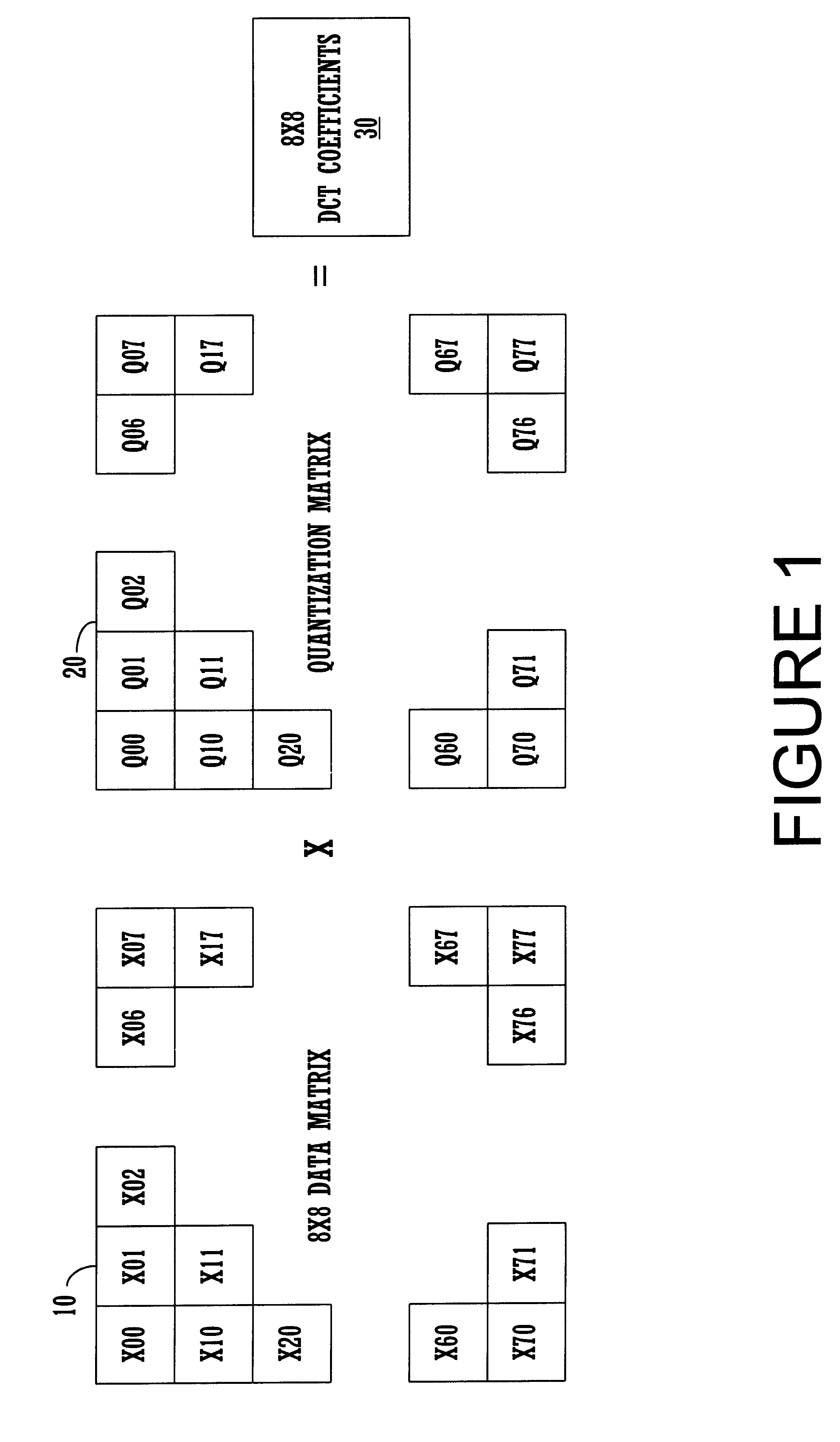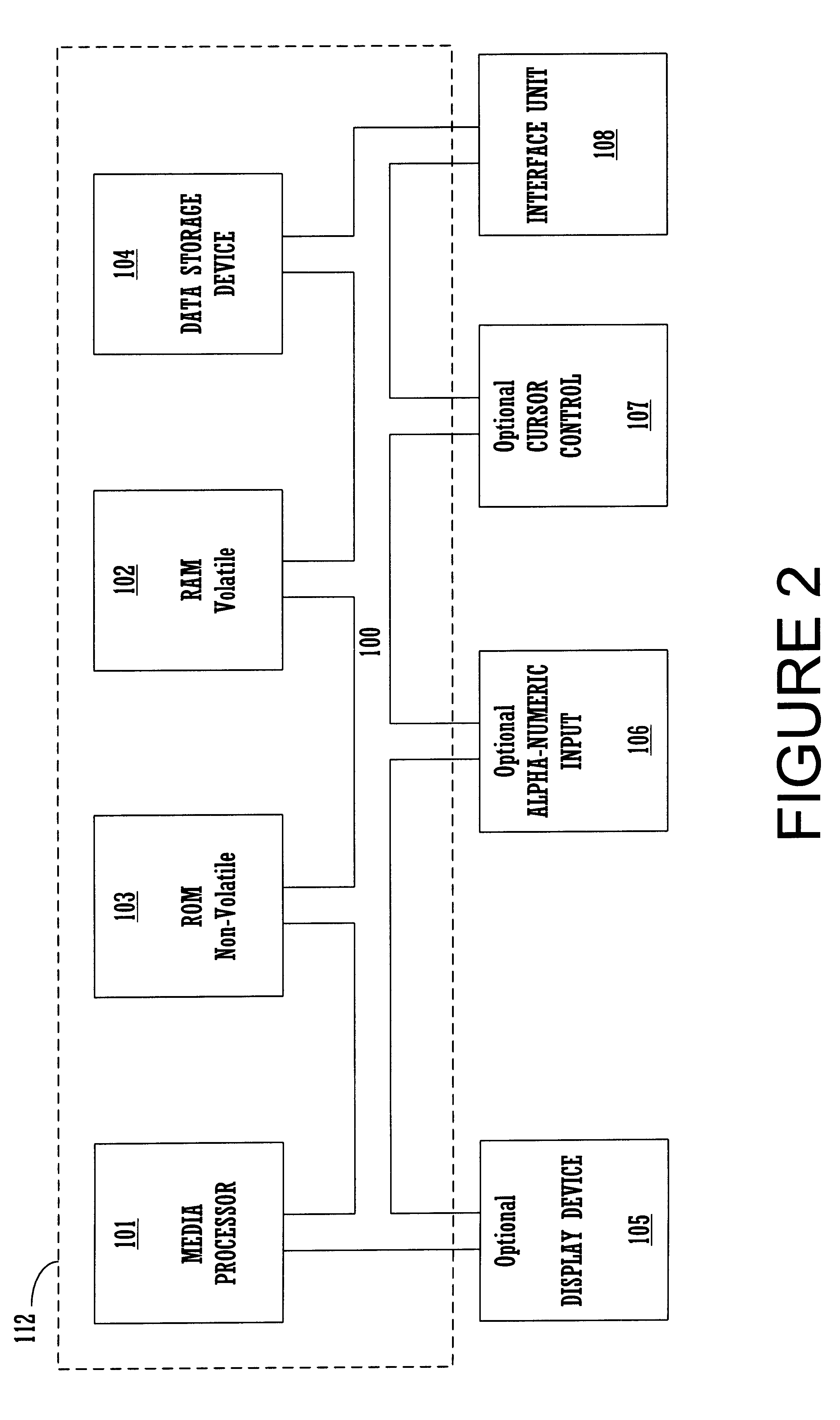Efficient de-quantization in a digital video decoding process using a dynamic quantization matrix for parallel computations
a dynamic quantization and decoding process technology, applied in the field of efficient decoding process for decoding audio/video material, can solve the problems of difficult computation in the simd (single instruction multiple data) architecture, difficult inverse quantization part of the dv decoding process, and time-consuming solution
- Summary
- Abstract
- Description
- Claims
- Application Information
AI Technical Summary
Benefits of technology
Problems solved by technology
Method used
Image
Examples
Embodiment Construction
Although the de-quantization process of the DV decoding process of the present invention can be implemented using a number of different computer programming languages and techniques, one exemplary implementation is shown below. It is appreciated that the following implementation is illustrated as an example only and should not be construed as limiting the present invention to any particular programming language or computer programming platform.
The preferred embodiment of the present invention, an efficient digital video (DV) decoder unit that utilizes a dynamically constructed quantization matrix that allows parallel computations to be performed, e.g., using SIMD processing, for inverse quantization to efficiently produce a matrix of DCT coefficients, is thus described. While the present invention has been described in particular embodiments, it should be appreciated that the present invention should not be construed as limited by such embodiments, but rather construed according to ...
PUM
 Login to View More
Login to View More Abstract
Description
Claims
Application Information
 Login to View More
Login to View More - R&D
- Intellectual Property
- Life Sciences
- Materials
- Tech Scout
- Unparalleled Data Quality
- Higher Quality Content
- 60% Fewer Hallucinations
Browse by: Latest US Patents, China's latest patents, Technical Efficacy Thesaurus, Application Domain, Technology Topic, Popular Technical Reports.
© 2025 PatSnap. All rights reserved.Legal|Privacy policy|Modern Slavery Act Transparency Statement|Sitemap|About US| Contact US: help@patsnap.com



